As any avid skier knows, the slopes can pose challenges to our joints, particularly the knees. So, in this guide, we will break down the mechanics of skiing and discuss the potential risks to your knee. We’ll also answer the important question: What is a knee brace for skiing? Understanding the significance of this support ensures safety and enjoyment on the slopes. Whatever your skiing level, keep reading!
The Mechanics of Skiing
Skiing engages intricate movements, requiring a solid grasp of its fundamental mechanics. As you glide down slopes, your knees play a pivotal role in maintaining balance and control. The bending and twisting motions inherent in skiing significantly stress the knee joints. Unfortunately, these dynamic movements also make skiers susceptible to various knee injuries. Common skiing-related knee issues include strains, sprains, and tears, often affecting the anterior cruciate ligament (ACL). Understanding the mechanics of skiing helps highlight the vulnerability of the knee.
In the following sections, we’ll explore how knee braces can act as crucial safeguards. Read on and see how wearing one can mitigate these risks and allow you to navigate the slopes confidently.
Knee Brace Explained
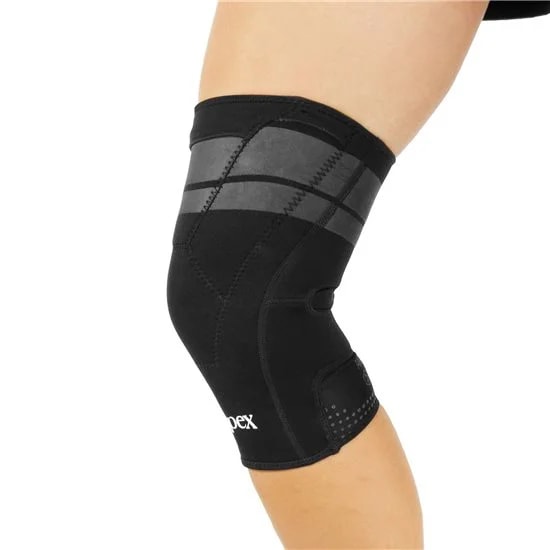
A knee support brace is designed to provide stability and protection to the knee joint. It is crafted from materials like neoprene, plastic, or metal worn around the knee area. This neoprene sleeve-style brace makes an excellent example.
The primary purpose of a knee brace is to offer support and alleviate strain on the knee. It especially comes in handy during activities that involve repetitive or impactful movements. By providing compression and reinforcement, knee braces help in stabilising the joint. This reduces the risk of injuries or minimises the impact of existing conditions. They serve as versatile tools that aid in maintaining optimal knee function. Individuals can engage in various physical activities with reduced vulnerability to strain.
Importance of Knee Braces in Skiing
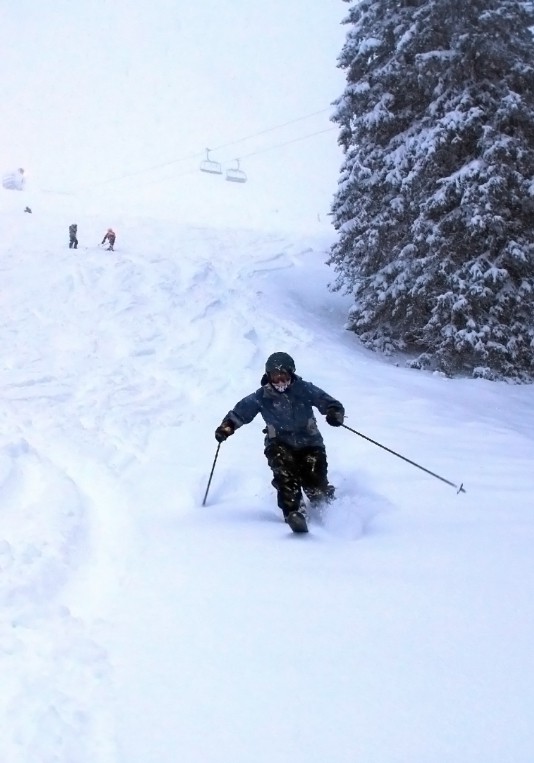 (Image Credit: Wikimedia Commons)
(Image Credit: Wikimedia Commons)
For skiers, knee braces stand as crucial accessories. These sports braces offer a dual benefit of injury prevention and enhanced performance. The dynamic nature of skiing involves constant knee movement. This also translates to potential stress on the joints.
Knee braces provide stability and support to mitigate the risk of injuries. By offering compression and reinforcement, they help prevent common skiing-related issues. Additionally, they contribute to enhanced performance. Wearing them helps reduce fatigue and provides added confidence in movement.
With the right knee support, skiers can navigate slopes with greater control. This allows for more precise turns and manoeuvres. These preventive and performance-enhancing aspects underscore their significance as essential gear for skiers.
Different Types Available
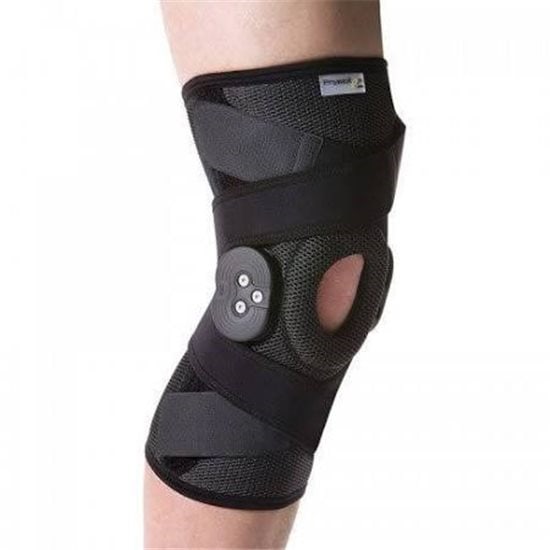
Various types of knee braces cater to the specific needs of skiers. The options are diverse for injury prevention and support. One common type is the prophylactic knee brace. This type is designed to offer general support and stability.
Another one is the functional knee braces. They are geared towards individuals with existing knee injuries. The simple yet effective design provides targeted reinforcement to the affected areas.
For specialised options, the unloader/off-loader knee braces stand out the most. They alleviate pressure on specific parts of the knee. Best suited for those with arthritis or meniscus issues. Additionally, a hinged knee brace incorporates joint-like hinges. Meaning it permits natural movement while providing enhanced support.
Consider additional features to ensure comfort and ease of use, such as:
- adjustable straps
- breathable materials
- lightweight designs
Choosing the right knee brace involves considering individual needs. With the diverse array available, this allows skiers to suit their unique requirements.
How to Choose the Right Knee Brace
Selecting the right knee brace for skiing involves careful consideration of individual needs. Begin by determining the correct size to ensure a snug and effective fit. A properly sized brace provides optimal support without causing discomfort. Assess the level of support required and consider factors such as:
- the skier’s experience
- the severity of any existing knee issues
- personal comfort preferences
High-support braces are suitable for those with a history of injuries. Meanwhile, low-profile options may be preferable for preventive use.
Compatibility with skiing activities is also paramount. Look for knee braces that allow a full range of motion, especially if you engage in dynamic skiing styles. Adjustable straps and hinges contribute to flexibility without compromising stability. Breathable materials are crucial for comfort during extended use on the slopes. Ultimately, the ideal knee brace provides tailored support to enhance safety and performance.
Tips for Using Knee Braces Effectively
To maximise the effectiveness of your knee brace, proper wear and maintenance are key. Ensure a snug yet comfortable fit by following the manufacturer’s sizing guidelines. Adjust straps according to your comfort and support needs, avoiding over-tightening. Regularly inspect the brace for signs of wear or damage. Replace it if necessary to maintain optimal support.
When it comes to wearing a knee brace during skiing, consider the nature of your activity. For preventative purposes, wearing a brace during all skiing sessions may be beneficial. If recovering from an injury, please do so throughout the entire skiing session.
The case is a bit different for those with mild discomfort or seeking added support, though. Instead, wearing the brace selectively may be sufficient. This means choosing specific times to wear the brace based on your needs. For instance, you’re experiencing mild discomfort during certain skiing manoeuvres. Wear the brace only when engaging in those activities to get support where and when you need it the most.
In essence, tailor your approach based on your needs. Always prioritise comfort and safety to ensure an enjoyable and injury-free skiing experience.
Round-up
Using the right knee brace is vital for safer and more enjoyable skiing. Whether preventing injuries or boosting performance, these accessories offer crucial support. Add this simple yet impactful gear to your skiing routine. Also, choose a brace that fits well for the best results. Happy skiing!Seeking additional gear protection? Explore our selection of sports supports, featuring knee supports, at Physioroom. Up next on your reading list: What Are the Most Common Skiing Injuries?


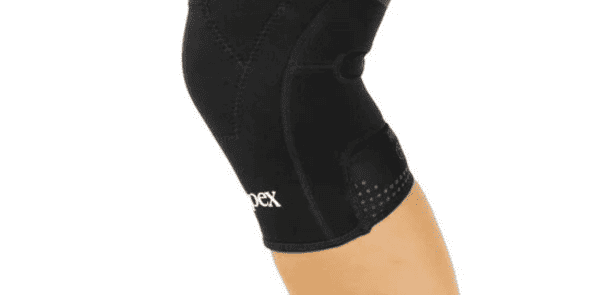
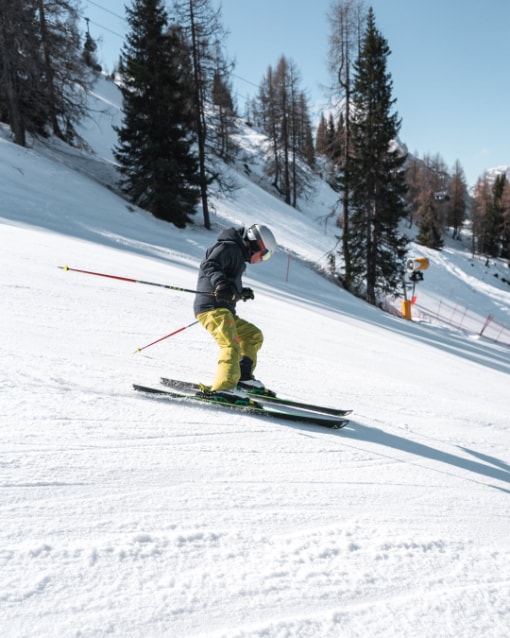 (
(